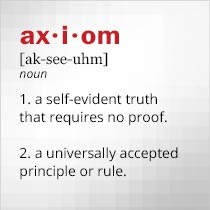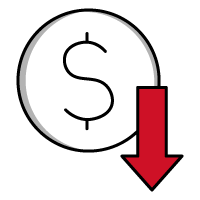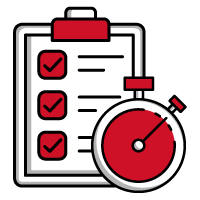Generate the Right Function for the Job
December 04, 2017
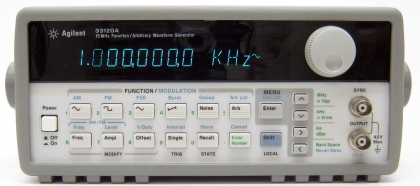 |
Repeatable signals are often needed for measurements, and signal generators are sources of test signals of many kinds. A signal source might be needed for a sine wave at a particular frequency or range of frequencies, or for a different kind of waveform, such as a square wave or a triangle wave. Quite simply, test signal generators can be divided into two camps: function generators and RF/microwave signal generators. When an elaborate waveform is needed at a lower frequency, such as 10 MHz, reach for the function generator. When a higher-frequency sine wave is required, such as in the GHz range, make sure it is an RF/microwave signal generator. This blog will take a closer look at function generators, which are also known as arbitrary waveform generators. The next blog will focus on the key specs for RF/microwave signal generators.
Why Pick a Function Generator?
In contrast to an RF/microwave signal generator, which is designed to generate sine waves, although often over a wide range of frequencies and often with built-in modulation sources, a function generator can create almost any form of signal waveform, including sine, square, pulse, ramp, and triangle waves. When comparing function generators, the maximum frequencies for an instrument will vary according to the type of output waveform, with the highest frequency for sine and square waves and a fraction of that frequency for triangle or ramp waveforms. If a function generator provides pulsed outputs - the maximum frequency for pulses will be somewhere between the maximum rates for sine/square and triangle/ramp waveforms. Output waveform voltages will be adjustable over some range of peak-to-peak minimum and maximum voltages, with accuracy specified at some output frequency, such as 1 kHz. Comparisons of different function generators in terms of frequency limits should be based on comparisons of similar waveforms for each source.
Function generators can also serve as a source of white noise for testing, providing noise over a defined bandwidth. Function generators or arbitrary waveform generators often provide the capability to modulate a generated waveform, in amplitude (AM), frequency (FM), or phase. The modulation source may be built into the function generator or provided as an external source. Function generators are often based on direct-digital-synthesizer (DDS) technology, where a high-speed digital-to-analog converter (DAC) is used to provide high-resolution voltage waveforms that can be programmed with high precision and can even be defined according to appropriate waveform creation software on a personal computer (PC) and the software downloaded to the function generator to create a waveform program.
Explore An Example
Given their DDS or arbitrary waveform generator (AWG) architectures, commercial function generators can be selected according to a number of parameters related to those architectures, including bit resolution, sampling rate, and clock frequency. As with a DAC, the number of bits will determine the vertical (amplitude) resolution of the voltage for the output waveform. The clock rate and sampling rate will set the limit on the maximum frequency of an output waveform. As an example, the Keysight Technologies 33120A Function/Arbitrary Waveform Generator operates with 40 MSamples/s sampling rate and 12-b resolution. It is capable of generating sine and square waves to 15 MHz, ramp and triangle waveforms to 100 kHz, and white noise over a 10-MHz bandwidth, with an output voltage range of 50 mV pp to 10 V pp. The instrument provides frequency-tuning resolution of 100 μHz. It derives its accuracy from a 10-MHz internal reference oscillator, with an option for a higher-stability 10-MHz clock.
As with many function generators, the Keysight Technologies 33120A provides precise control of signal phase, with the capability to control the signal phase and offsets from DC over a range of -360 to +360 deg. with 0.001-deg. resolution. It has built-in modulation sources for AM, FM, burst modulation, and frequency-shift-keying (FSK) modulation. Since it has AWG capabilities in addition to being a function generator, waveforms can be defined point by point in software programs and recalled as stored waveforms. The 33120A provides as many as 16,000 data points with which to define an arbitrary waveform.
Producing Pulses
Some function generators can double as pulse generators, such as the two-channel Yokogawa FG320, which is actually a function generator, arbitrary waveform generator, and pulse generator. It can perform linear and logarithmic sweeps and provide sine waves and square waves from 1 μHz to 15 MHz, triangle waves and pulses from 1 μHz to 200 kHz, and arbitrary waveforms from 1 μHz to 200 kHz with ±10 V output range.
When testing DUTs with high-speed logic waveforms, such as CMOS, ECL, and TTL, a pulse generator or function generator capable of high-speed pulses will be needed, such as the Keysight /Agilent 8110A pulse generator with timing to 150 MHz. Any pulse generator for such testing should deliver tight control of output pulses with high accuracy and minimal jitter or variation in timing. The 8110A pulse generator can provide one or two channels of pulses with 10-ps resolution, pulse widths from 3.3 ns to 999 ms, and 10%/90% transition range of 10 ns to 200 ms for flexible generation of the high-speed waveforms needed for testing modern digital circuitry. In addition, it is quite a workable function generator, capable of high-speed waveforms such as square waves and triangle waves.
Hearing is Believing
Fidelity may be more important than speed in some applications, however, and a function generator designed for low-distortion audio testing such as the Stanford Research DS360 may provide the best set of performance and features for such testing. The Stanford Research DS360 uses a 20-b DAC and DDS architecture to generate sine and square waves from 10 MHz to 200 kHz; it can also generate white and pink noise. For audio testing, where noise must be minimized, this instrument provides spectrally pure outputs, with distortion of less than -100 dBc even at the upper limits of the audio frequency range, at 20 kHz. Even-harmonic distortion is also low, at -60 dBc or less through 20 kHz.
The next test blog will take a closer look at RF/microwave signal generators and how to compare performance parameters among different models, including whether tradeoffs exist between different performance parameters, such as spectral purity and switching speed. It will also examine several test signal sources that offer outstanding performance at millimeter-wave frequencies (above 30 GHz), for the growing number of applications at millimeter-wave frequencies, such as advanced driver assistance system (ADAS) automotive radars and coming 5G wireless communications networks.
For more information on the equipment mentioned here or on Axiom’s inventory of function generators including downloadable data sheets are all available from the Axiom Test Equipment website at www.axiomtest.com or by contacting Axiom Test Equipment’s sales department at sales@axiomtest.com or by calling 760-806-6600.
Back to BLOG


